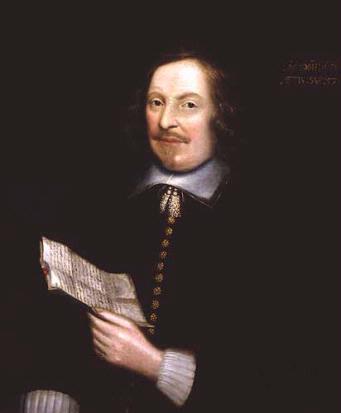
“And God be praised, we had a good increase…. Our harvest being gotten in, our governor sent four men on fowling that so we might after a special manner rejoice together….These things I thought good to let you understand… that you might on our behalf give God thanks who hath dealt so favourably with us.”
So wrote Puritan separatist Edward Winslow from Plymouth Colony in a letter to a friend in 1621, and this is the earliest known written account of what constitutes American Thanksgiving in the imaginations of people worldwide.
Not that there’s universal agreement on the date of America’s first Thanksgiving. In a very good essay on the history of Thanksgiving, the Plimoth Planation web site notes:
Florida, Texas, Maine and Virginia each declare itself the site of the First Thanksgiving and historical documents support the various claims. Spanish explorers and other English Colonists celebrated religious services of thanksgiving years before Mayflower arrived. However, few people knew about these events until the 20th century. They were isolated celebrations, forgotten long before the establishment of the American holiday, and they played no role in the evolution of Thanksgiving. But as James W. Baker states in his book, Thanksgiving: The Biography of an American Holiday, “despite disagreements over the details’ the 3-day event in Plymouth in the fall of 1621 was ‘the historical birth of the American Thanksgiving holiday.”
And there’s the fact that Native Americans (the Wampanoag people of coastal, southern Massachusetts) not only were contributing guests to what is commonly believed to be the first feast of thanks organized by the Plymouth colonists, but that this kind of feasting and recreation to celebrate the harvest was a part of their culture prior to the arrival of Europeans. As with all historical moments that are not really moments but collections of experiences and beliefs, the closer you look, the more complicated it becomes.
Nevertheless, Massachusetts remains an iconic site—for good reason—for imagining the mythical origin of this popular family holiday that has endured (and that many have endured) over the centuries. If you would like to broaden your understanding of the evolution of this holiday or maybe even use it as an excuse to sample some local and national history with your curious child, I recommend these web resources and maybe even some of the public programs some of them depict:
- Plimoth Plantation Thanksgiving Virtual Field Trip
- Scholastic’s The First Thanksgiving site (co-produced by Plimouth Plantation using imagery from that living history museum)
- Thanksgiving at Old Sturbridge Village slide show
- Open hearth cooking demonstrations at Historic Deerfield
- Norman Rockwell Home for the Holidays Exhibit, Norman Rockwell Museum
- Native People Long Ago and Today, Fruitlands
- Jonathan Edwards’ 1734 Thanksgiving Sermon (given during his residency in Northampton)
- Library of Congress’ early documents about Thanksgiving, starting in 1721

Let’s fast-forward to the nineteenth century and take a look at the institution of Thanksgiving as a national holiday—the movement to make this holiday a firm, annual, federal holiday was headed by the influential editor and tastemaker Sarah Josepha Hale, “editrix” (her preferred title) of Godey’s Lady’s Book. In a years-long series of editorials and a letter written to Abraham Lincoln, Hale argued for the importance of this formality. And as balm to the national wounds inflicted by the Civil War, he complied:
October 3, 1863
By the President of the United States of America: A Proclamation.
The year that is drawing toward its close has been filled with the blessings of fruitful fields and healthful skies. To these bounties, which are so constantly enjoyed that we are prone to forget the sources from which they come, others have been added, which are of so extraordinary a nature that they cannot fail to penetrate and soften the heart which is habitually insensible to the ever-watchful providence of Almighty god.
In the midst of a civil war of unequalled magnitude and severity, which has sometimes seemed to foreign states to invite and provoke their aggressions, peace has been preserved with all nations, order has been maintained, the laws have been respected and obeyed, and harmony has prevailed everywhere except in the theatre of military conflict; while that theatre has been greatly contracted by the armies and navies of the Union.
Needful diversions of wealth and of strength from the fields of peaceful industry to the national defence [sic] have not arrested the plough, the shuttle, or the ship; the axe has enlarged the borders of our settlements, and the mines, as well of iron and coal as of the precious metals, have yielded even more abundantly than heretofore. . . .
. . . I do, therefore, invite my fellow-citizens in every part of the United States, and also those who are at sea and those who are sojourning in foreign lands, to set apart and observe the last Thursday of November next as a Day of Thanksgiving and Praise to our beneficent Father who dwelleth in the heavens.
Images:
Top: Portrait of Edward Winslow, 1651 (From the collection of the Pilgrim Hall Museum, Plymouth, MA)
Bottom: Letter from Sarah Josepha Hale to Abraham Lincoln, 1863 (Library of Congress)


